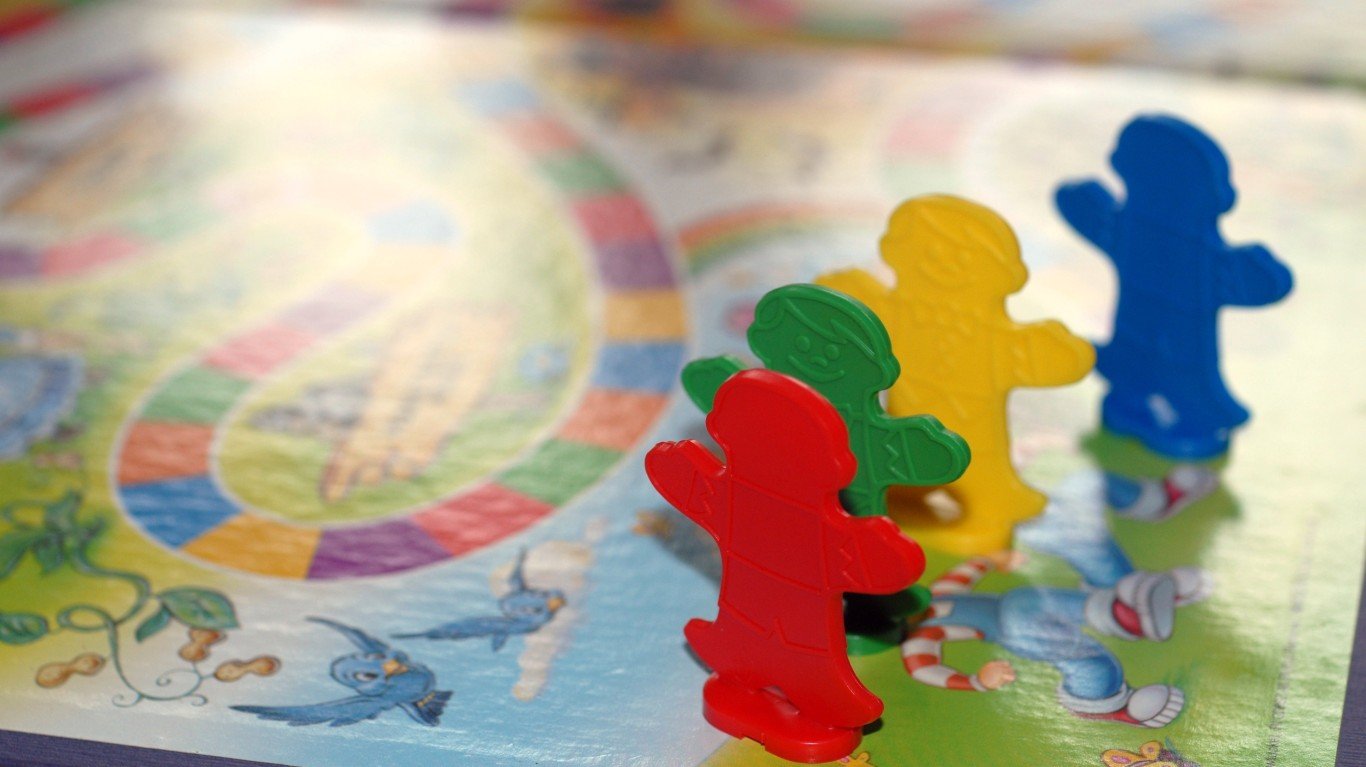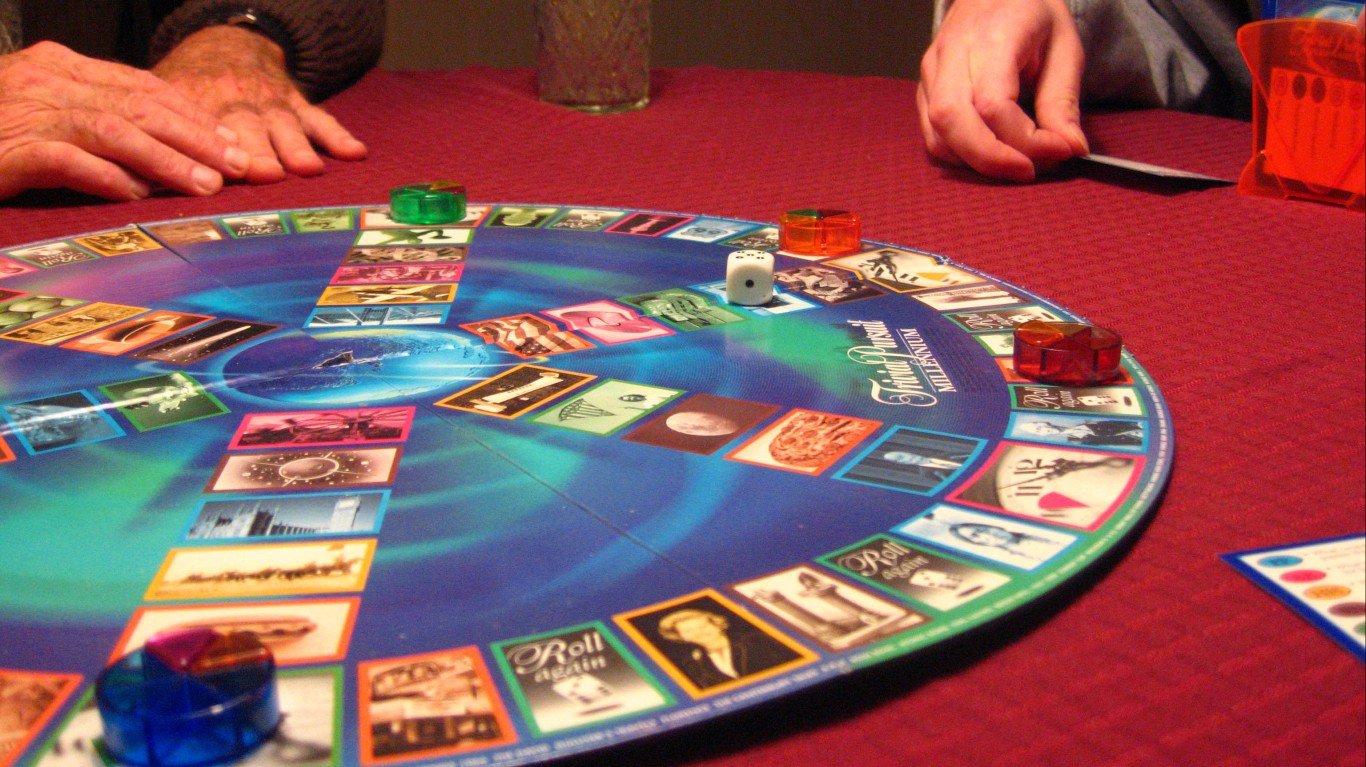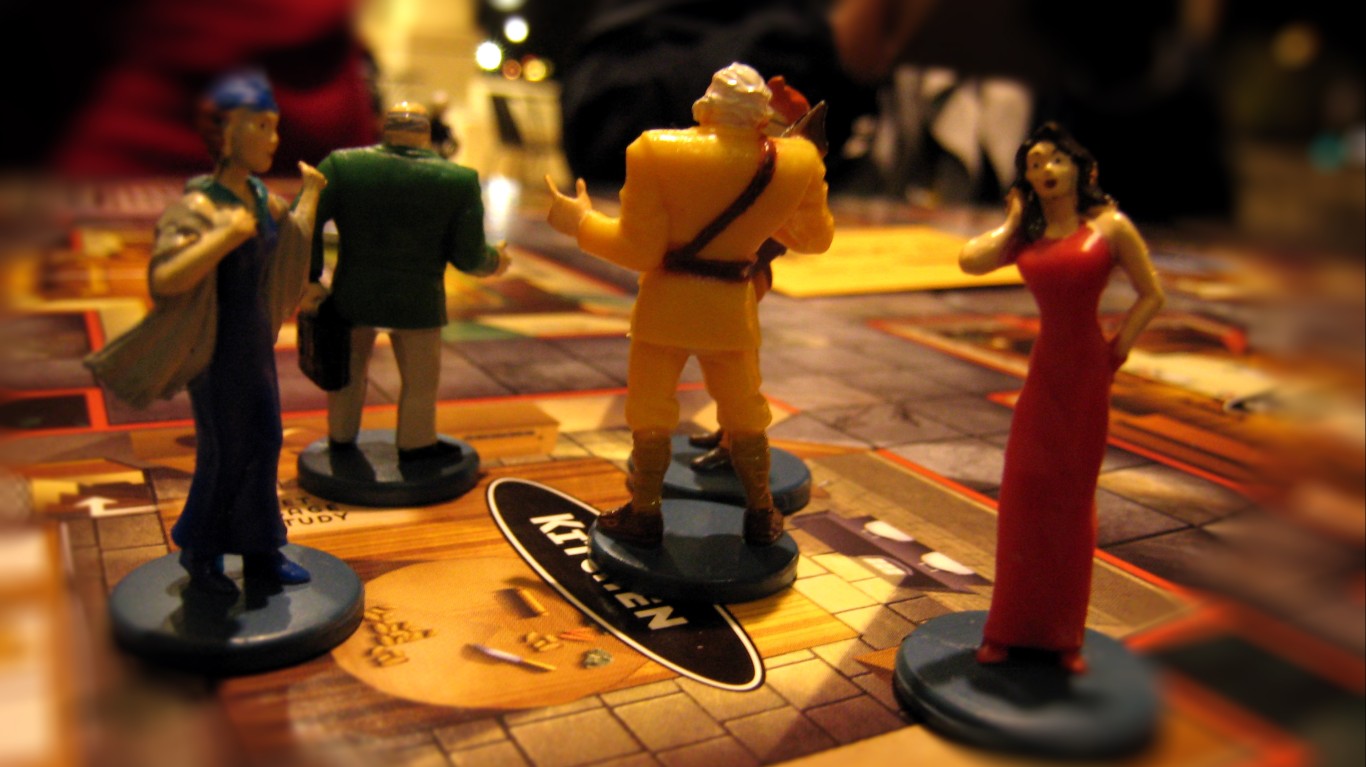

Board game sales boomed at the beginning of the pandemic. According to Euromonitor, the global games and puzzles market increased almost $1 billion in value in 2020, reaching a total of $11.3 billion. Even before the pandemic, though, the market was growing. In an increasingly digital age, many consumers prefer the in-person interactions afforded by tabletop games. (If you’re not one of them, you might consider the best-selling Nintendo games of all time.)
To compile a list of the best-selling board games of all time, 24/7 Tempo reviewed a report by the gift and toy site Fun.com. The site based its ranking on sales records collected over the years, including estimates, where possible, of the number of units of each board game that has sold since the game was first introduced. (These are the best-selling board games in America.)
Click here to see the most popular board games of all time
Some of the most popular games on the list are also the oldest. Ancient games including checkers, chess, mancala, and backgammon have been around for more than 1,000 years and are widely played in various parts of the world, often using makeshift boards and pieces. The oldest modern games on the list are Othello, Battleship, Scrabble, and Monopoly, while newer games include Cranium, Blokus, and Catan.
20. Cranium
> Year introduced: 1998
> Units sold since debut: Unknown (1 million sold in 2001)
> Number of players required: 4-16
In this party game, teams of players race the clock to tackle a variety of tasks that may include celebrity impersonations, drawing with their eyes closed, or answering trivia questions.
[in-text-ad]
19. Blokus
> Year introduced: 2000
> Units sold since debut: 3 million
> Number of players required: 2-4
In this game of spatial strategy, players attempt to fill the board with their own tetris-like pieces while blocking opponents from placing theirs.

18. Connect 4
> Year introduced: 1974
> Units sold since debut: 4 million
> Number of players required: 2
Players take turns dropping colored tokens into a grid in an attempt to create a vertical, horizontal, or diagonal line of four tokens of the same color.

17. Mancala
> Year introduced: 1400 B.C.
> Units sold since debut: 18 million (the modern version)
> Number of players required: 2
In this ancient two-player harvest game, the goal of is to strategically sow seeds on the board and collect the most seeds in your own storehouse.
[in-text-ad-2]
16. Stratego
> Year introduced: 1961
> Units sold since debut: 20 million
> Number of players required: 2
The objective of Stratego, an army game with 40 pieces on each side, is to capture the opposing army’s flag or deplete its forces to the point of immobility.

15. Risk
> Year introduced: 1957
> Units sold since debut: 25 million
> Number of players required: 2-6
With six continents and 42 territories, this political strategy game entails complex interactions of diplomacy and conquest, and can take days to complete.
[in-text-ad]
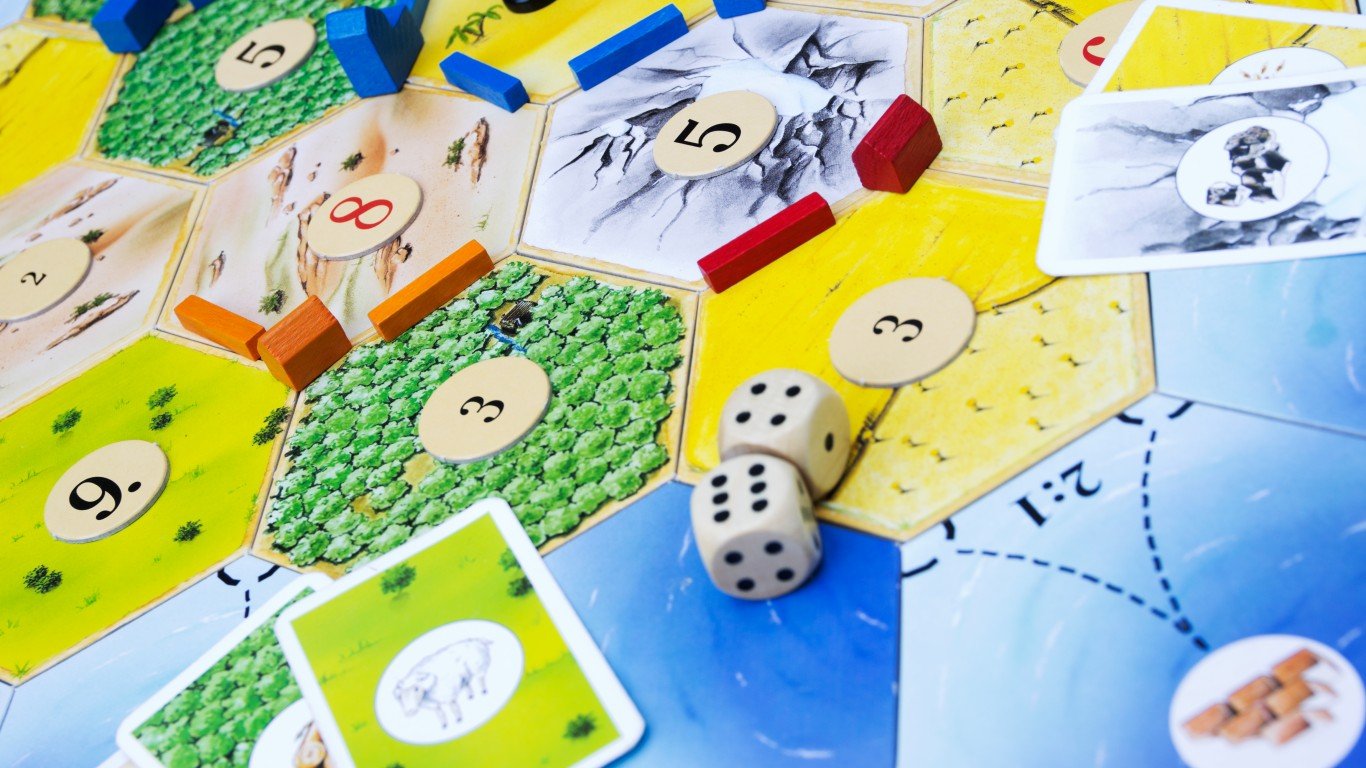
14. Catan
> Year introduced: 1995
> Units sold since debut: 32 million
> Number of players required: 3-4
The premier resource management game, Catan involves building settlements, cities, and roads by collecting and spending various natural resources in order to dominate the board.
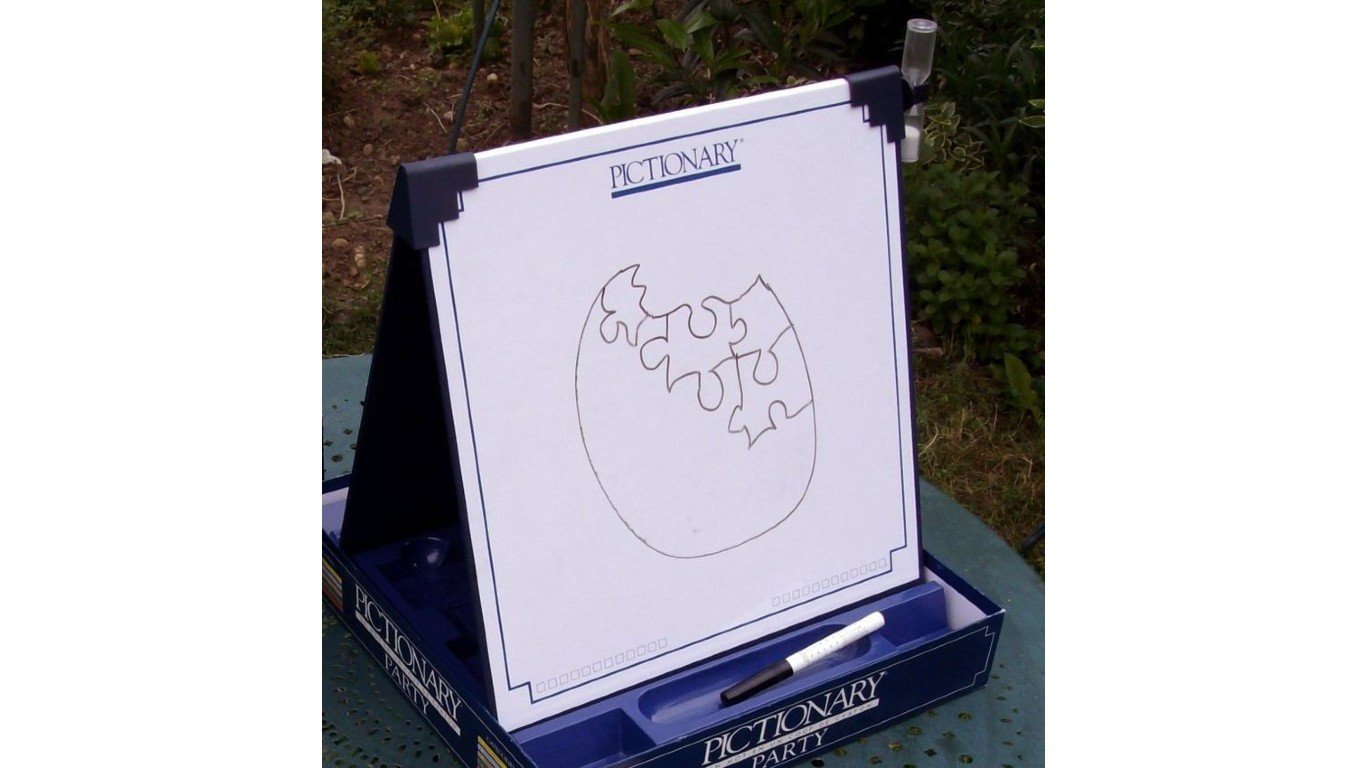
13. Pictionary
> Year introduced: 1985
> Units sold since debut: 38 million
> Number of players required: 2 teams
Teams rely on the artistic skills of their members in this drawing game where players must guess the word or phrase relayed by a quick sketch.
12. Othello
> Year introduced: 1883
> Units sold since debut: 40 million
> Number of players required: 2
In this fast-paced strategy game, players place discs on a board in an attempt to surround and take their opponent’s discs.
[in-text-ad-2]
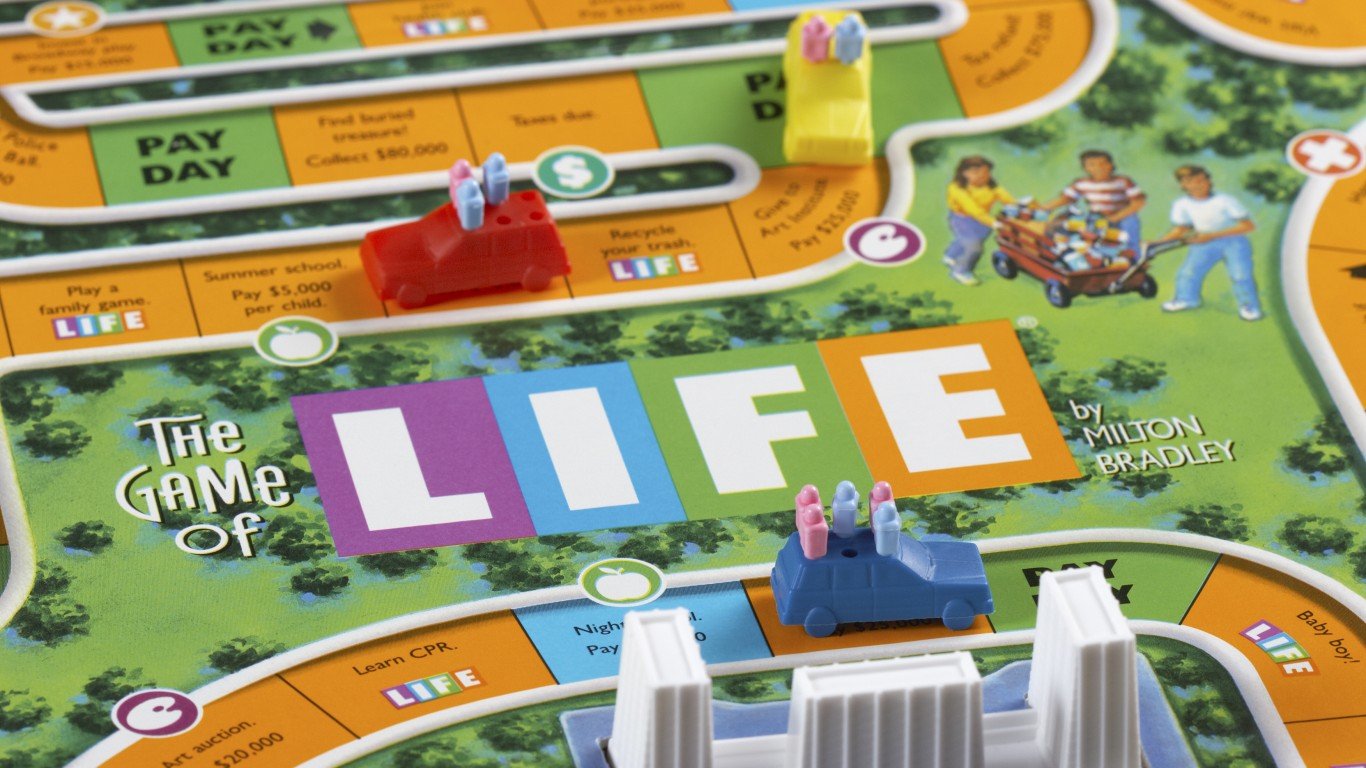
11. The Game of Life
> Year introduced: 1960
> Units sold since debut: 50 million
> Number of players required: 2-6
Players can choose from over 30 careers as they navigate the ups and downs of debt, housing, wealth, and vacations.
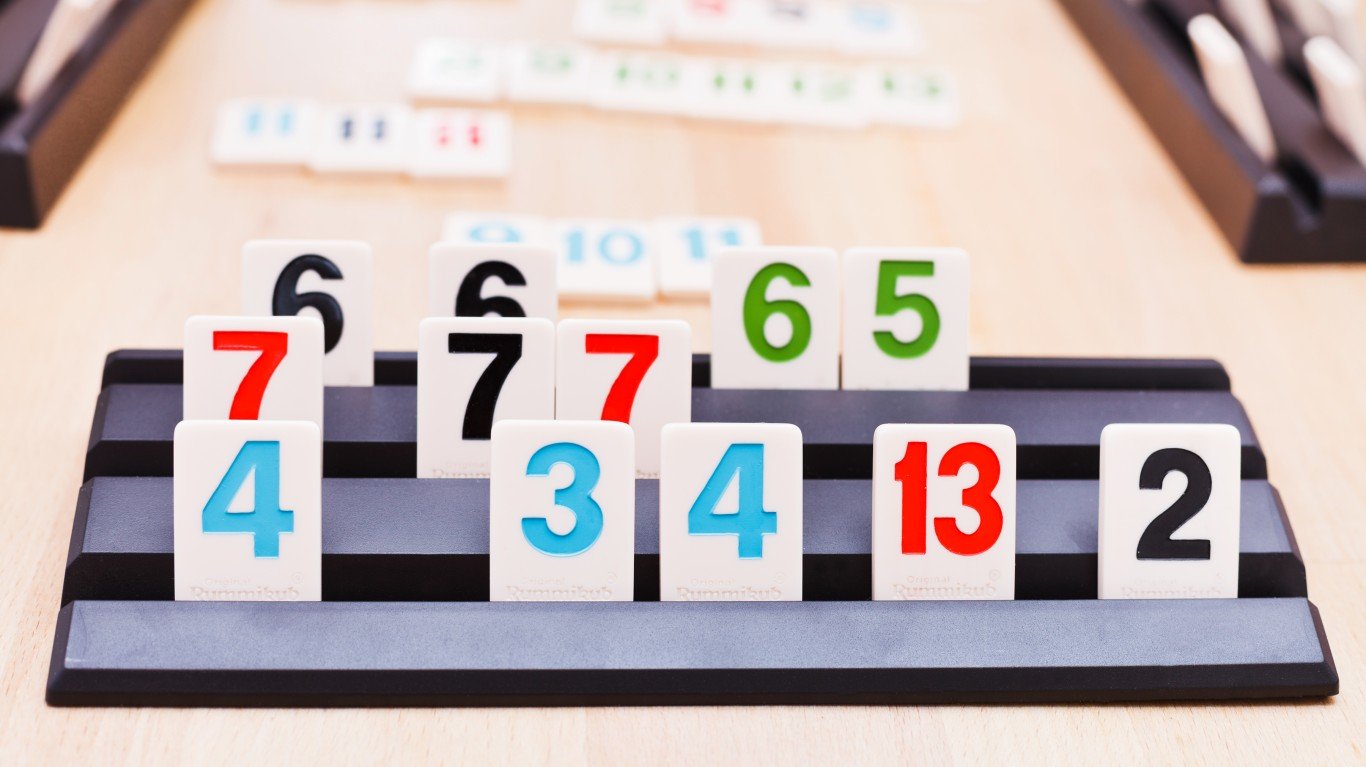
10. Rummikub
> Year introduced: 1950
> Units sold since debut: 50 million
> Number of players required: 2-4
With 104 numbered tiles in four colors as well as two jokers, Rummikub’s objective is to create target tile sets before your opponent does.
[in-text-ad]
9. CandyLand
> Year introduced: 1949
> Units sold since debut: 50 million
> Number of players required: 2-4
Suitable for children young and old, this colorful, candy-themed racing board game has a long, winding track that leads to the Candy Castle.
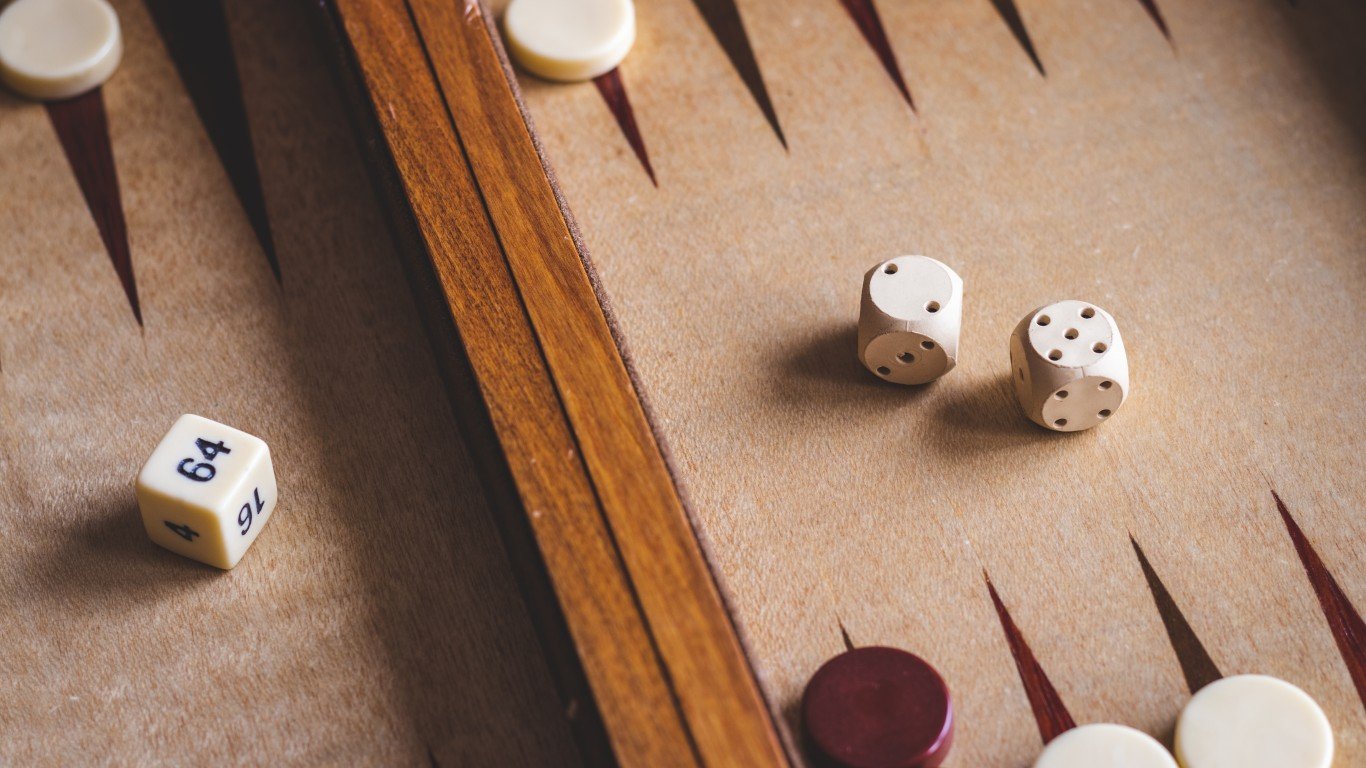
8. Backgammon
> Year introduced: 3000 B.C.
> Units sold since debut: 88 million (the modern version)
> Number of players required: 2
In backgammon, a two-player game with dice and checker-like pieces, the objective is to move pieces around the board until they can be taken off, with the first player to remove all their pieces winning.
7. Trivial Pursuit
> Year introduced: 1981
> Units sold since debut: 100 million
> Number of players required: 2-6
This classic trivia game has over 2,400 questions in six categories: science and nature, history, sports and leisure, entertainment, art and literature, and geography.
[in-text-ad-2]

6. Battleship
> Year introduced: 1931
> Units sold since debut: 100 million
> Number of players required: 2
Based on a pen-and-paper game dating back to WWI, Battleship is a strategy guessing game where players seek to sink their opponent’s naval fleet.
5. Clue
> Year introduced: 1949
> Units sold since debut: 150 million
> Number of players required: 3-6
In this murder mystery game, players move through a mansion using sleuthing skills to determine the nature of their host’s untimely death.
[in-text-ad]

4. Scrabble
> Year introduced: 1938
> Units sold since debut: 150 million
> Number of players required: 2-4
Using a tiled board and letters worth varying amounts of points, Scrabble players spell out words and connect them to other words in a style similar to a crossword puzzle.

3. Monopoly
> Year introduced: 1935
> Units sold since debut: 275 million
> Number of players required: 2-8
The goal of this real estate trading game is to own the most properties on the board and drive competitors into bankruptcy.
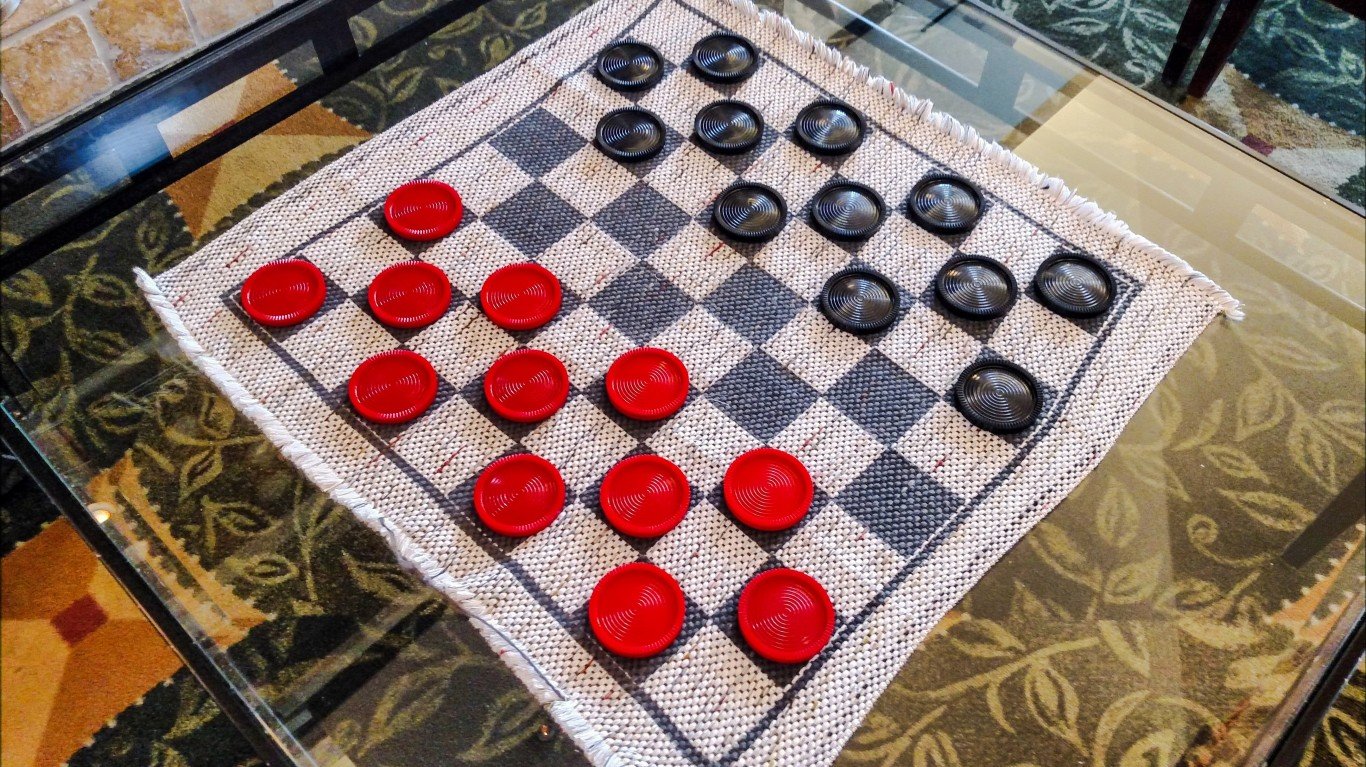
2. Checkers
> Year introduced: 3000 B.C.
> Units sold since debut: An estimated 50 billion (since its debut 5,000 years ago)
> Number of players required: 2
Players in checkers move discs across a checkered board with the goal of reaching the other side of the board and capturing all of their opponent’s discs.
[in-text-ad-2]

1. Chess
> Year introduced: 1200
> Units sold since debut: Unknown (3 million sold yearly in the U.S.)
> Number of players required: 2
Played on a checkered board with an array of six types of pieces that move in distinct ways to capture opposing pieces, chess is a strategy game with a nearly infinite number of possible movement patterns.
Sponsored: Attention Savvy Investors: Speak to 3 Financial Experts – FREE
Ever wanted an extra set of eyes on an investment you’re considering? Now you can speak with up to 3 financial experts in your area for FREE. By simply
clicking here you can begin to match with financial professionals who can help guide you through the financial decisions you’re making. And the best part? The first conversation with them is free.
Click here to match with up to 3 financial pros who would be excited to help you make financial decisions.
Thank you for reading! Have some feedback for us?
Contact the 24/7 Wall St. editorial team.
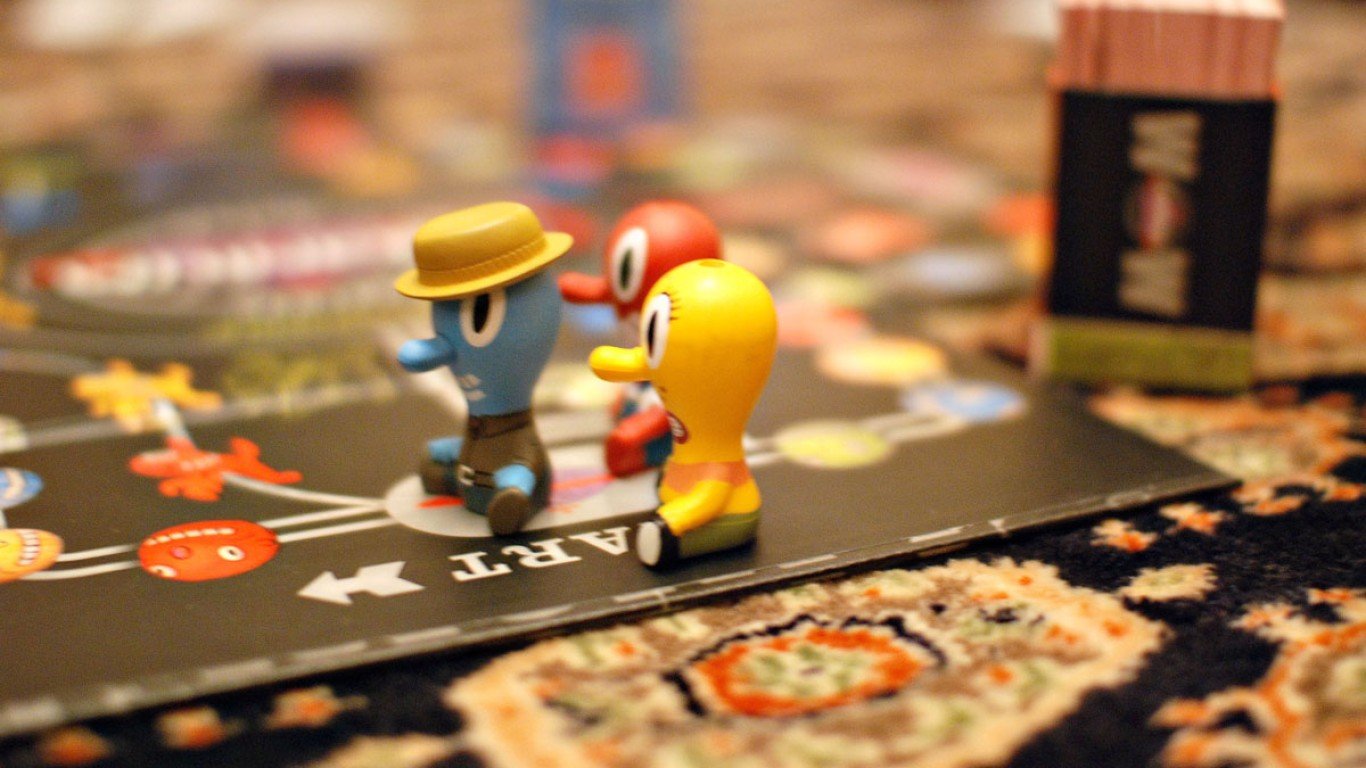
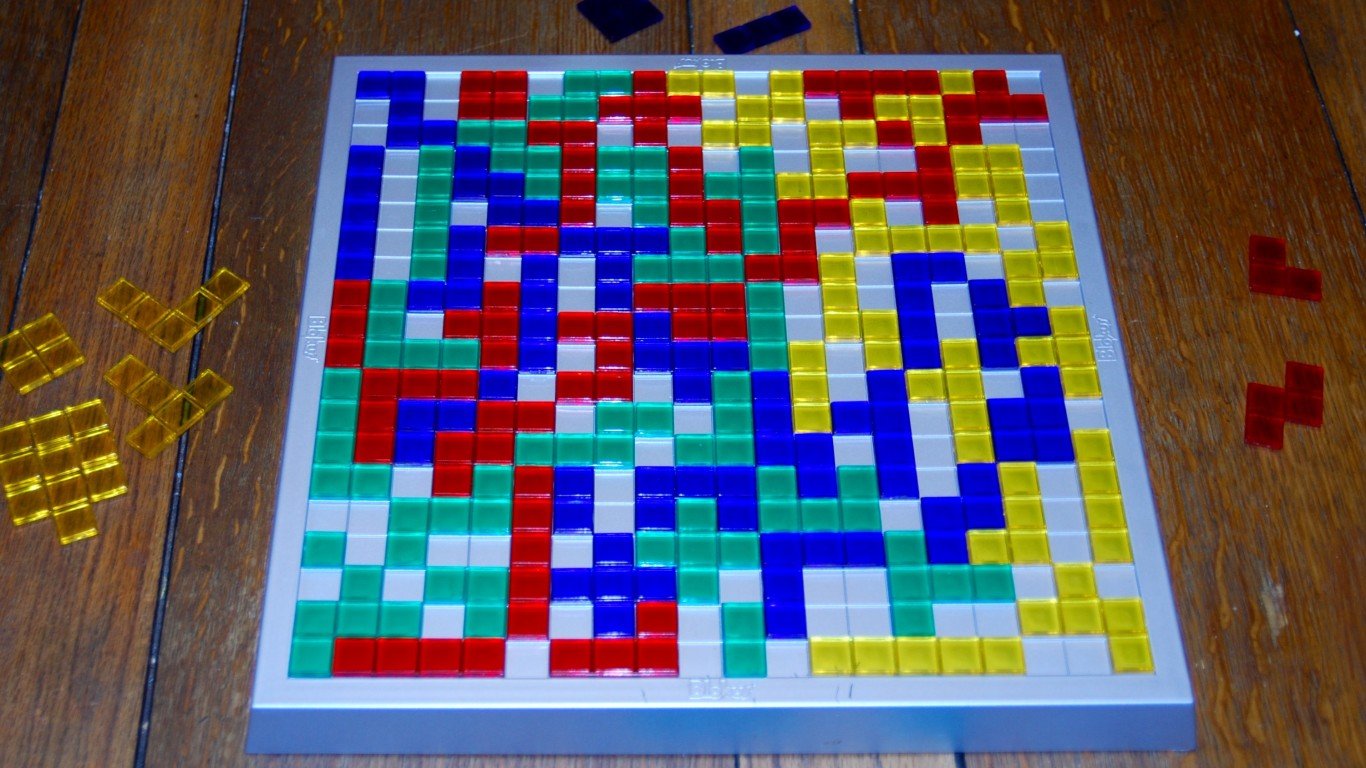
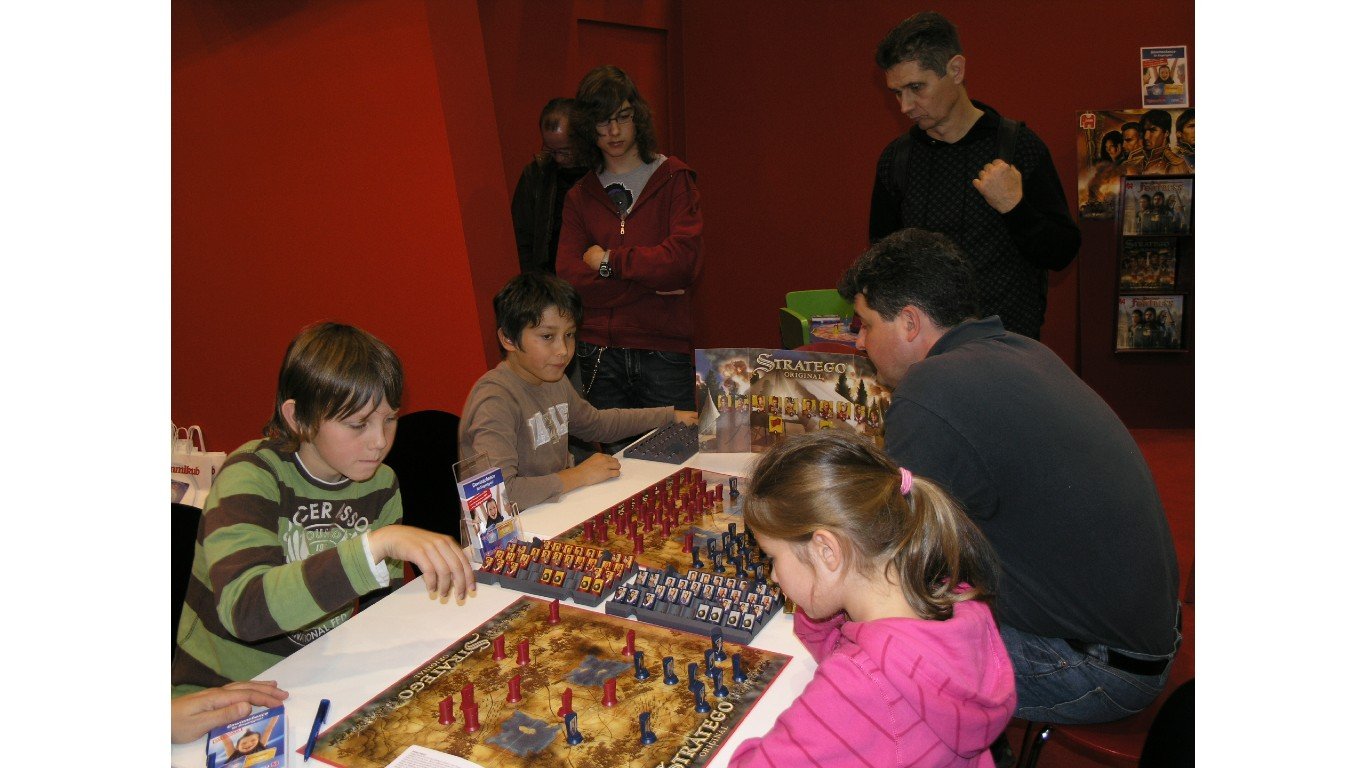
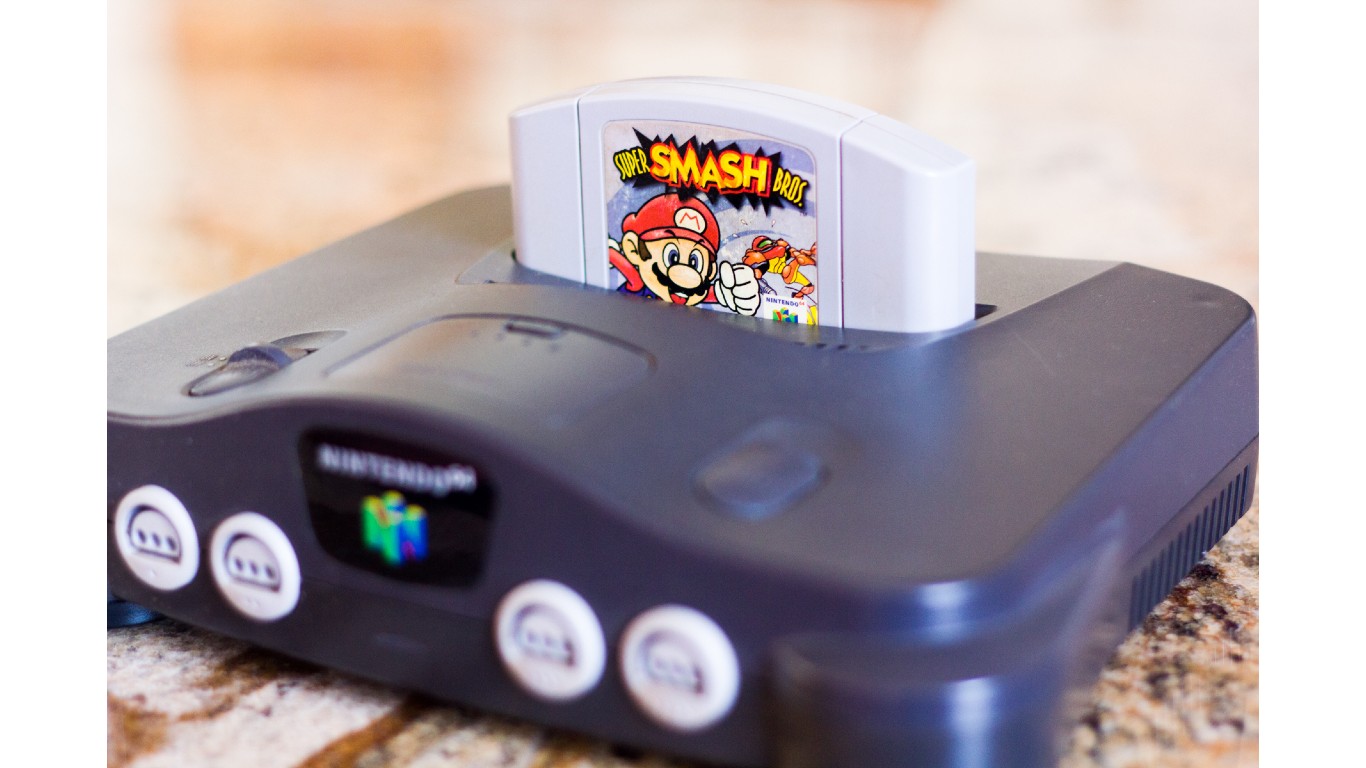 24/7 Wall St.
24/7 Wall St.
